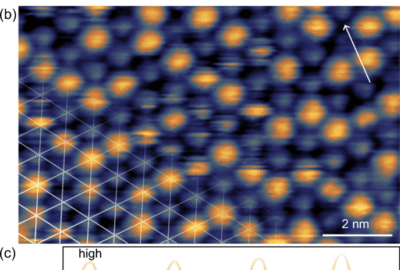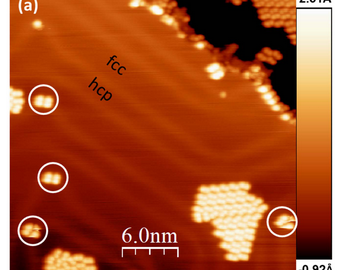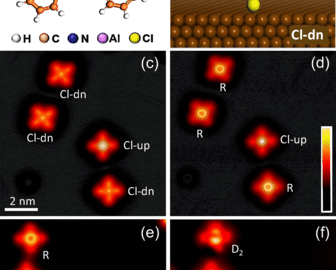publications
Elastic properties of moiré lattices in epitaxial two-dimensional materials
Unlike conventional two-dimensional (2D) semiconductor superlattices, moiré patterns in 2D materials are flexible and their electronic, magnetic, optical, and mechanical properties depend on their topography. Within a continuous+atomistic theory treating 2D materials as crystalline elastic membranes, we abandon the flat-membrane scenario usually assumed for these materials and address out-of-plane deformations. We confront our predictions to experimental analyses on model systems, epitaxial graphene, and MoS2 on metals and reveal that compression/expansion and bending energies stored in the membrane can compete with adhesion energy, leading to a subtle moiré wavelength selection and the formation of wrinkles.
Alexandre Artaud1,2,3, Nicolas Rougemaille1, Sergio Vlaic4, Vincent T. Renard2, Nicolae Atodiresei5, and Johann Coraux1,*
- 1Université Grenoble Alpes, CNRS, Institut NEEL, Grenoble INP, 38000 Grenoble, France
- 2Université Grenoble Alpes, CEA, Grenoble INP, IRIG, PHELIQS, 38000 Grenoble, France
- 3Department of Quantum Nanoscience, Kavli Institute of Nanoscience, Delft University of Technology, 2628 CJ Delft, the Netherlands
- 4Laboratoire de Physique et d’Étude des Matériaux, ESPCI Paris, PSL University, CNRS UMR8213, Sorbonne Universités, 75005 Paris, France
- 5Peter Grünberg Institute and Institute for Advanced Simulation, Forschungszentrum Jülich, Wilhelm-Johnen-Straße, 52428 Jülich, Germany
Comments are closed







